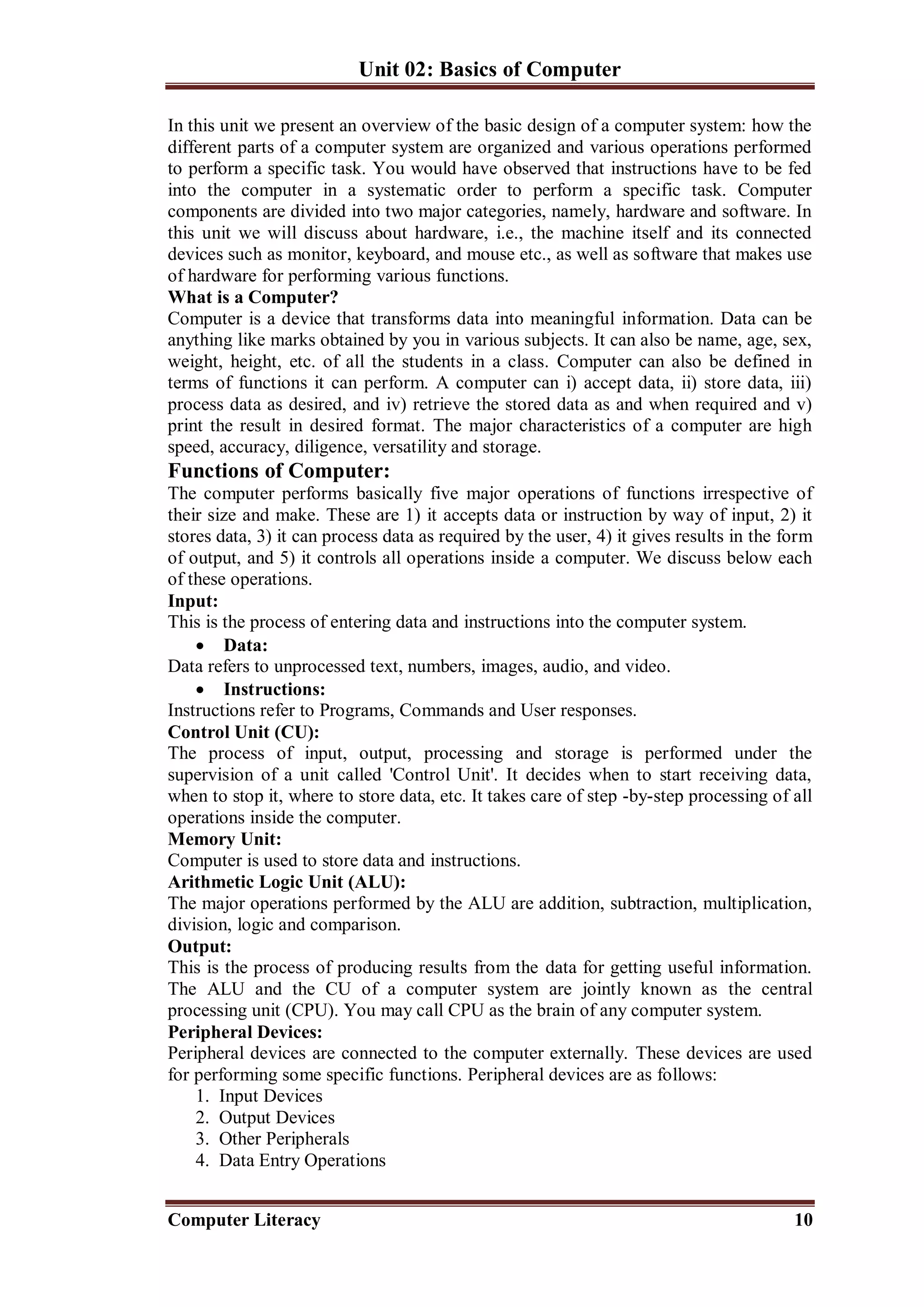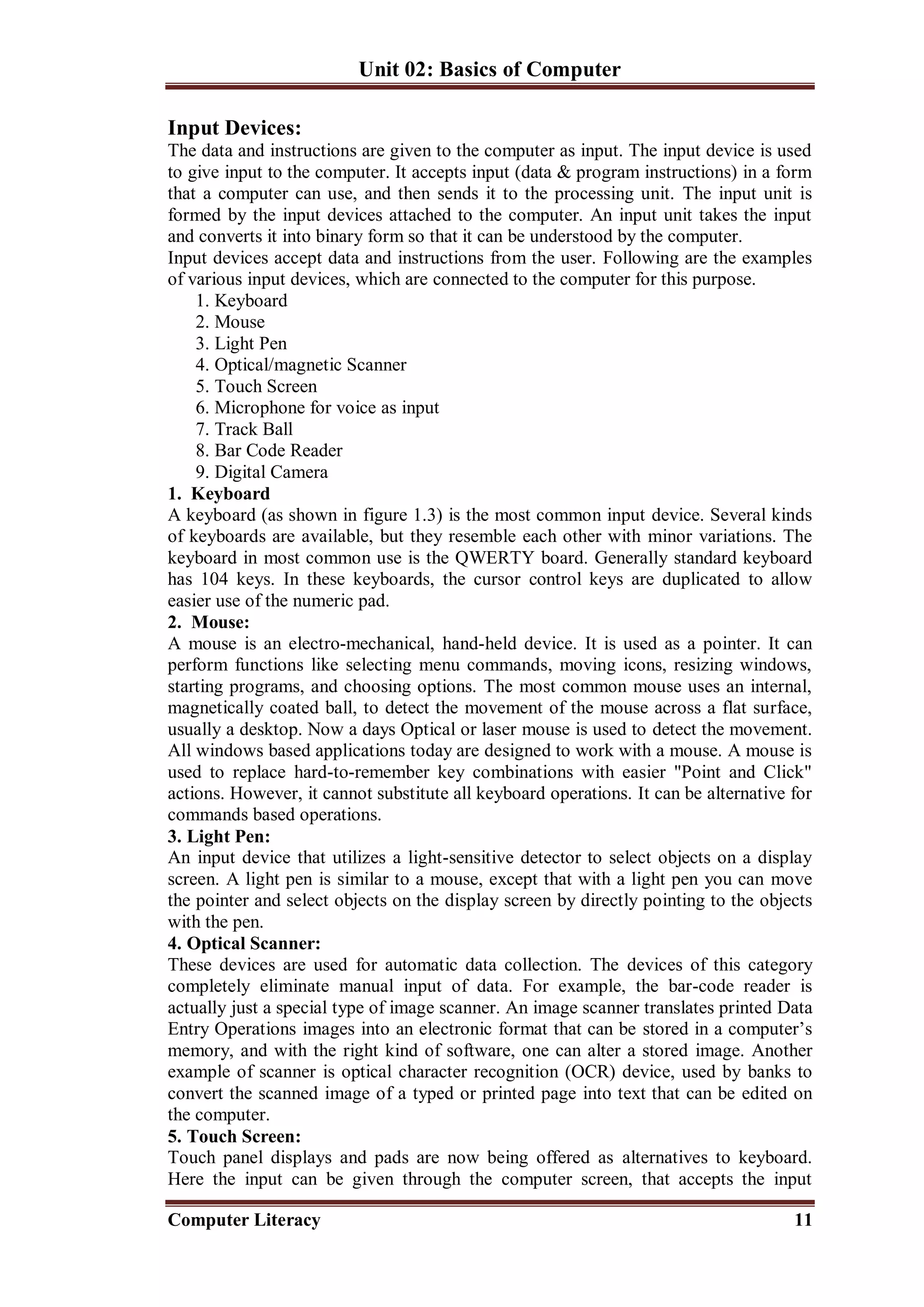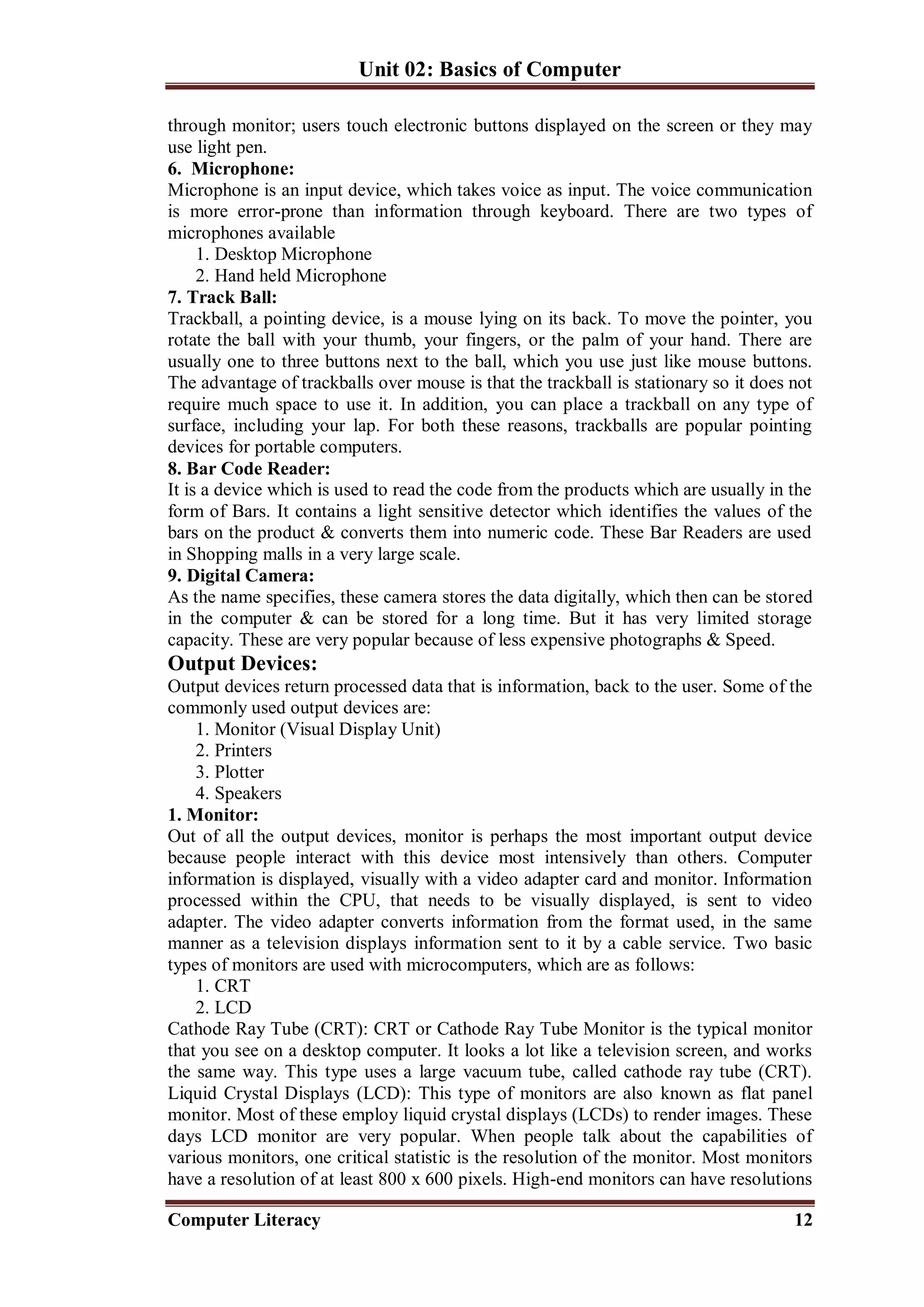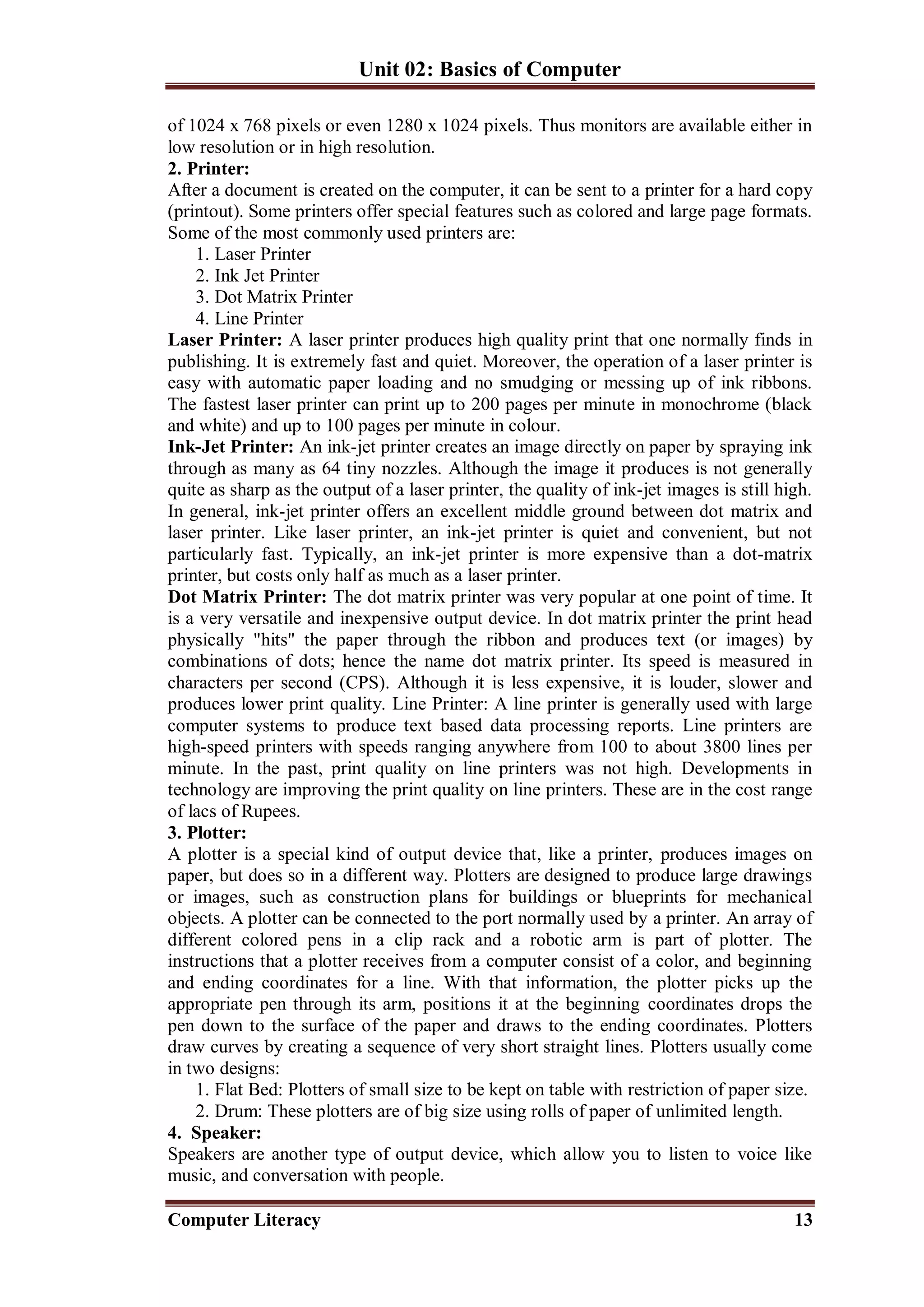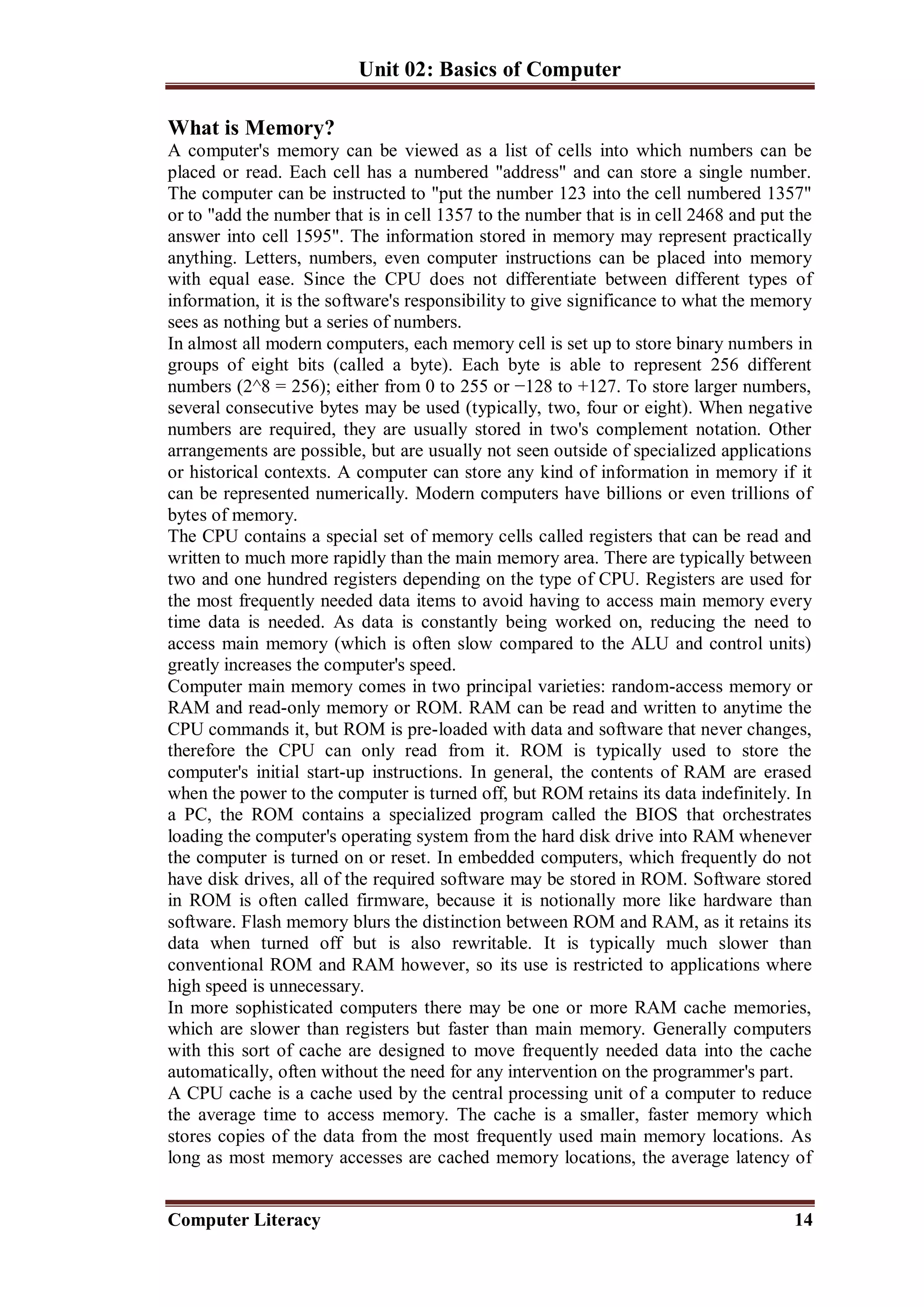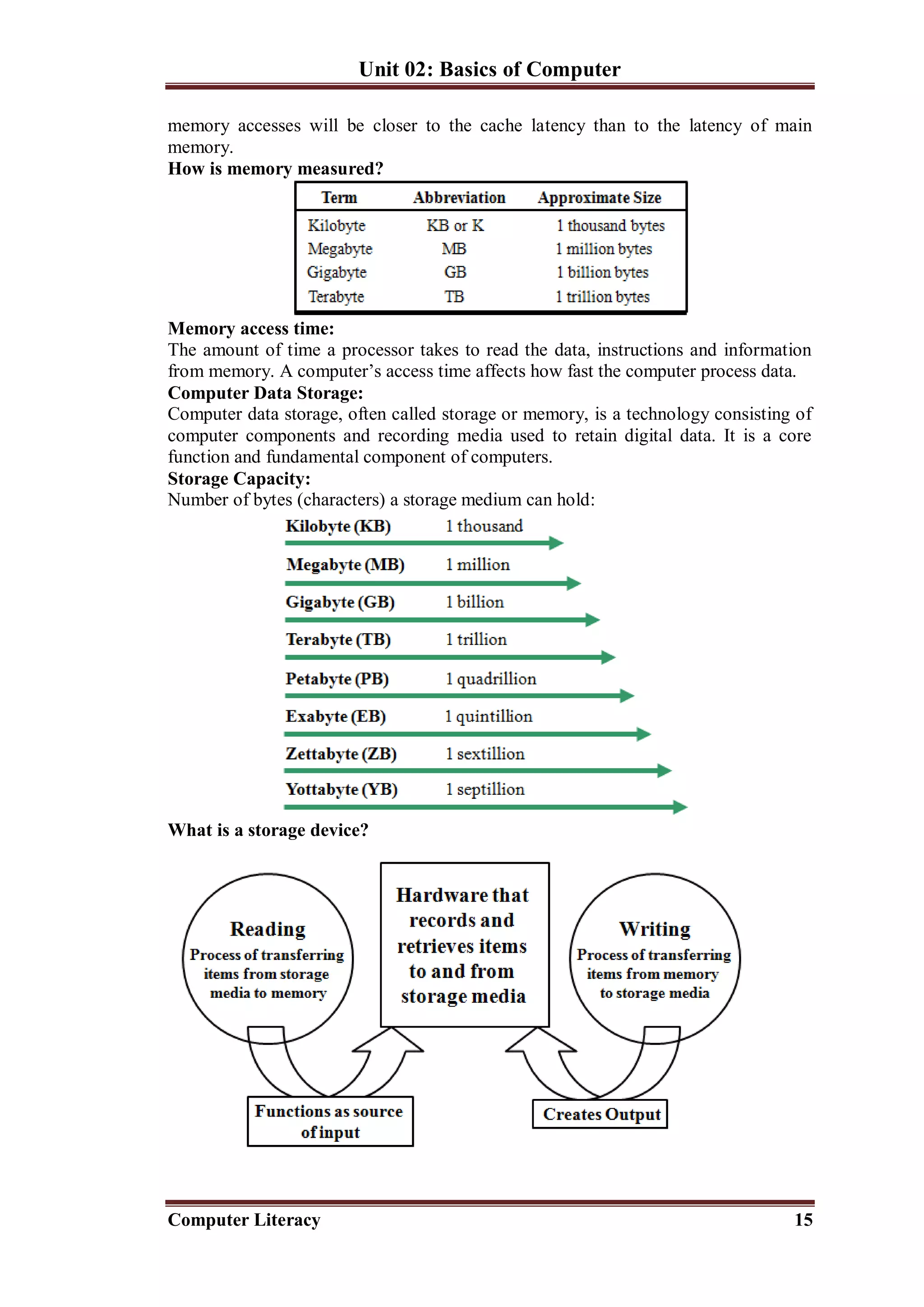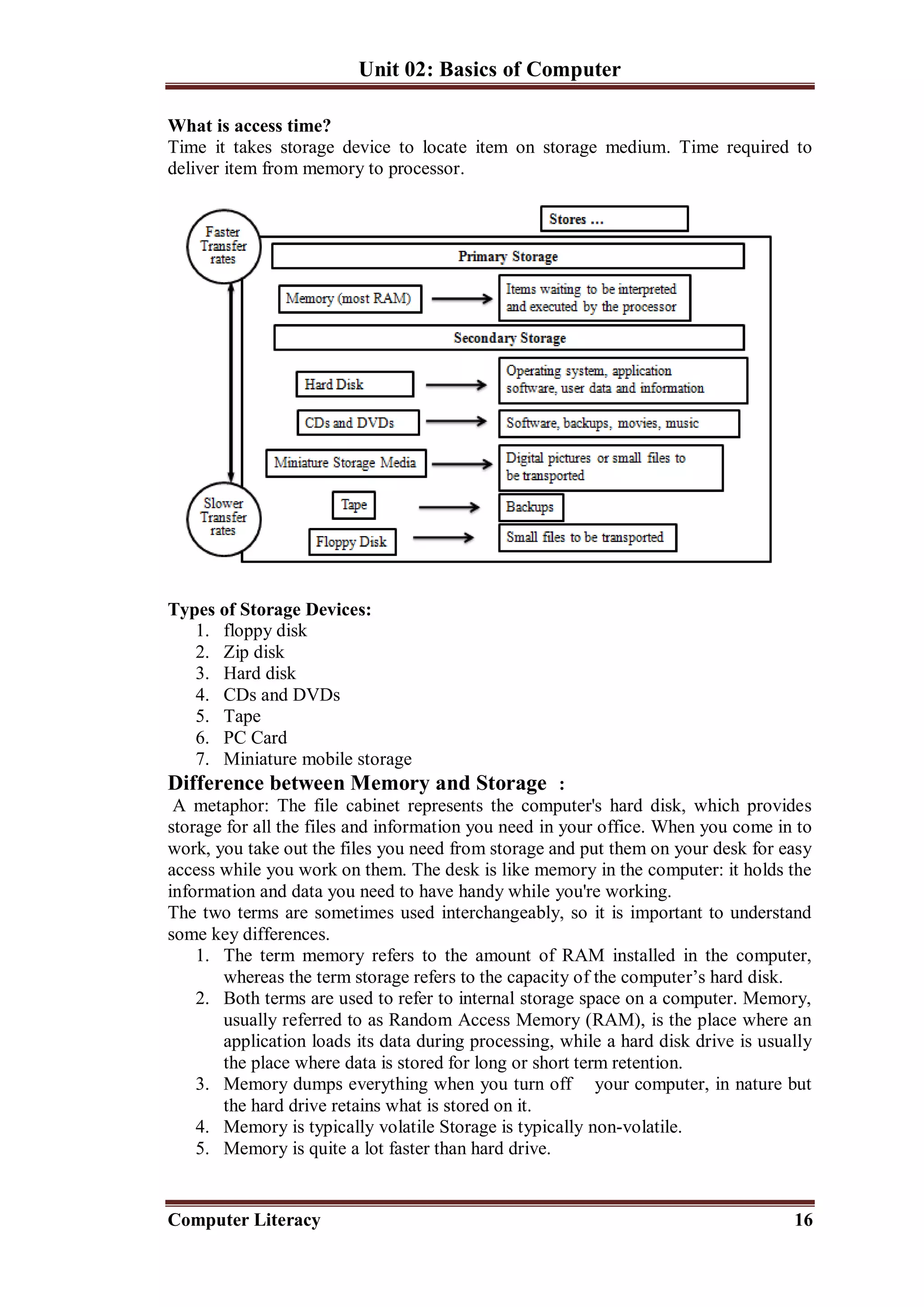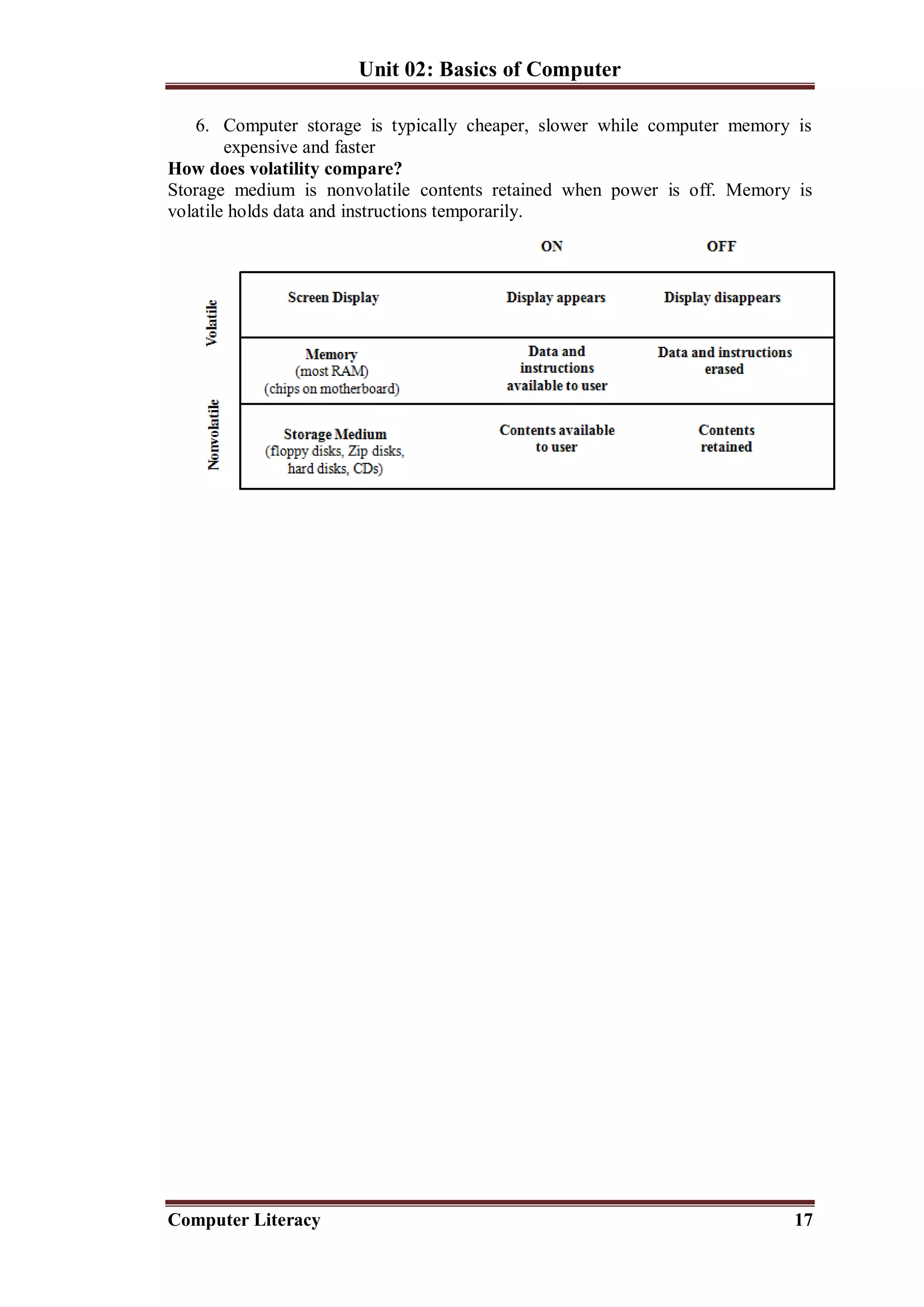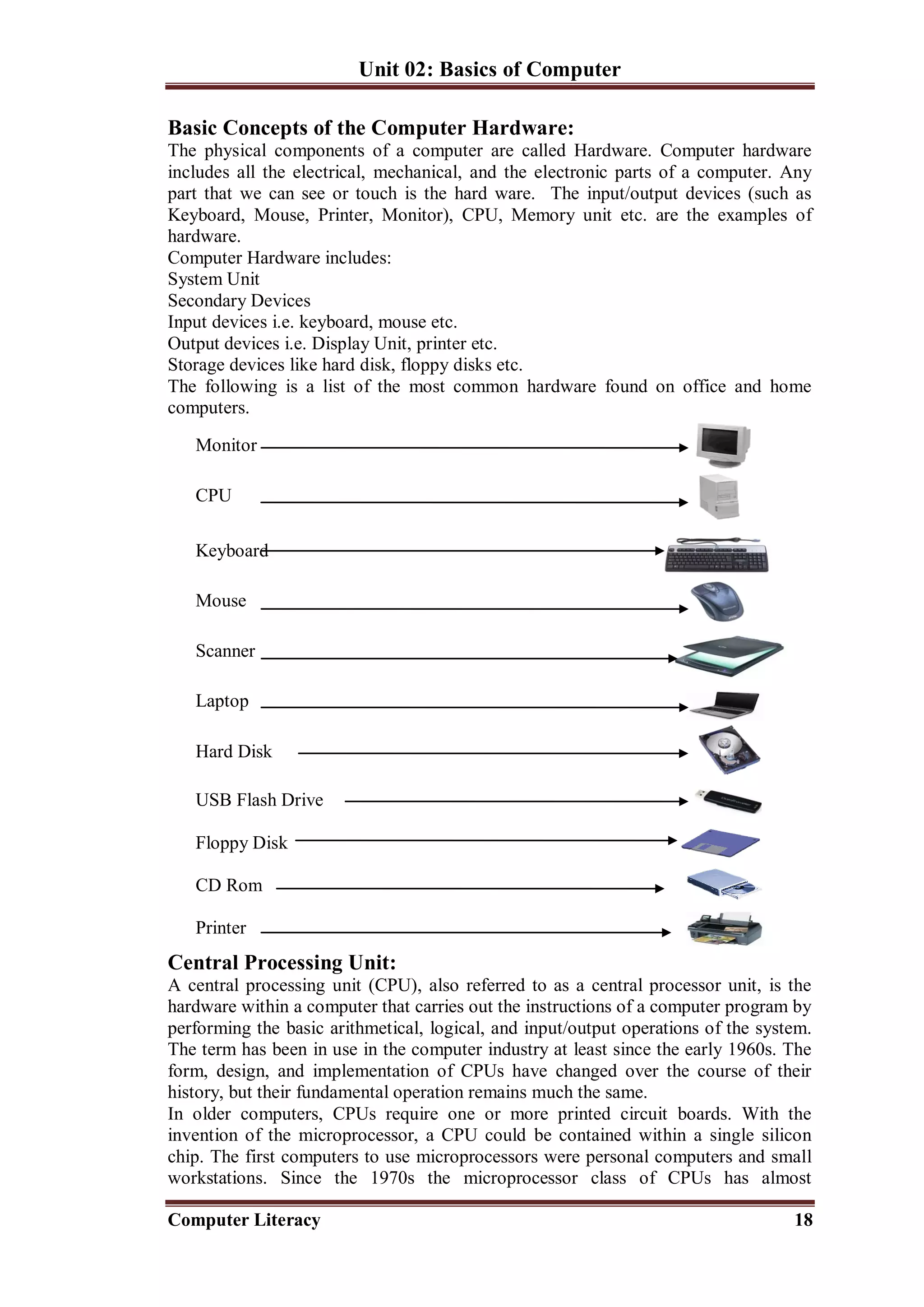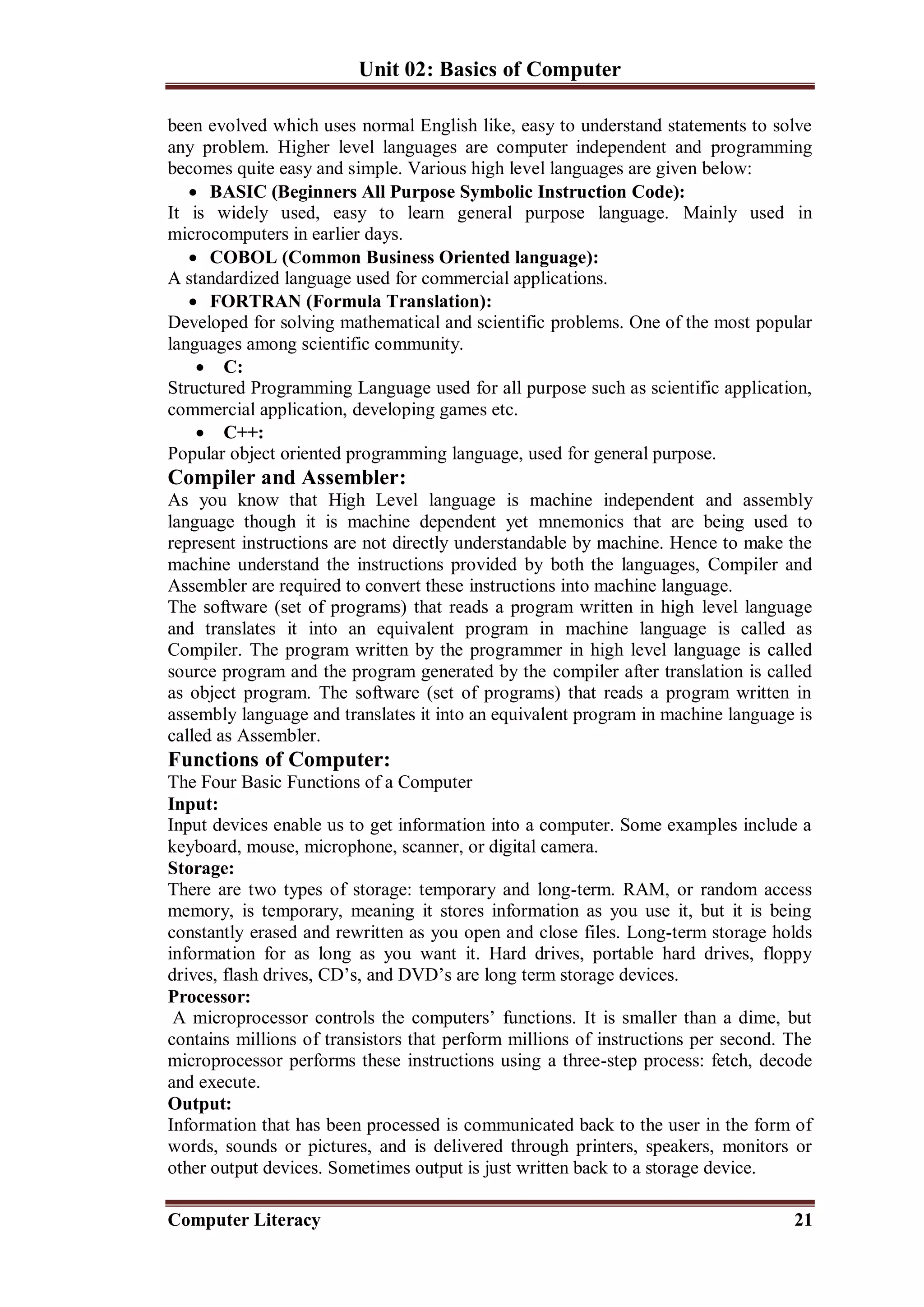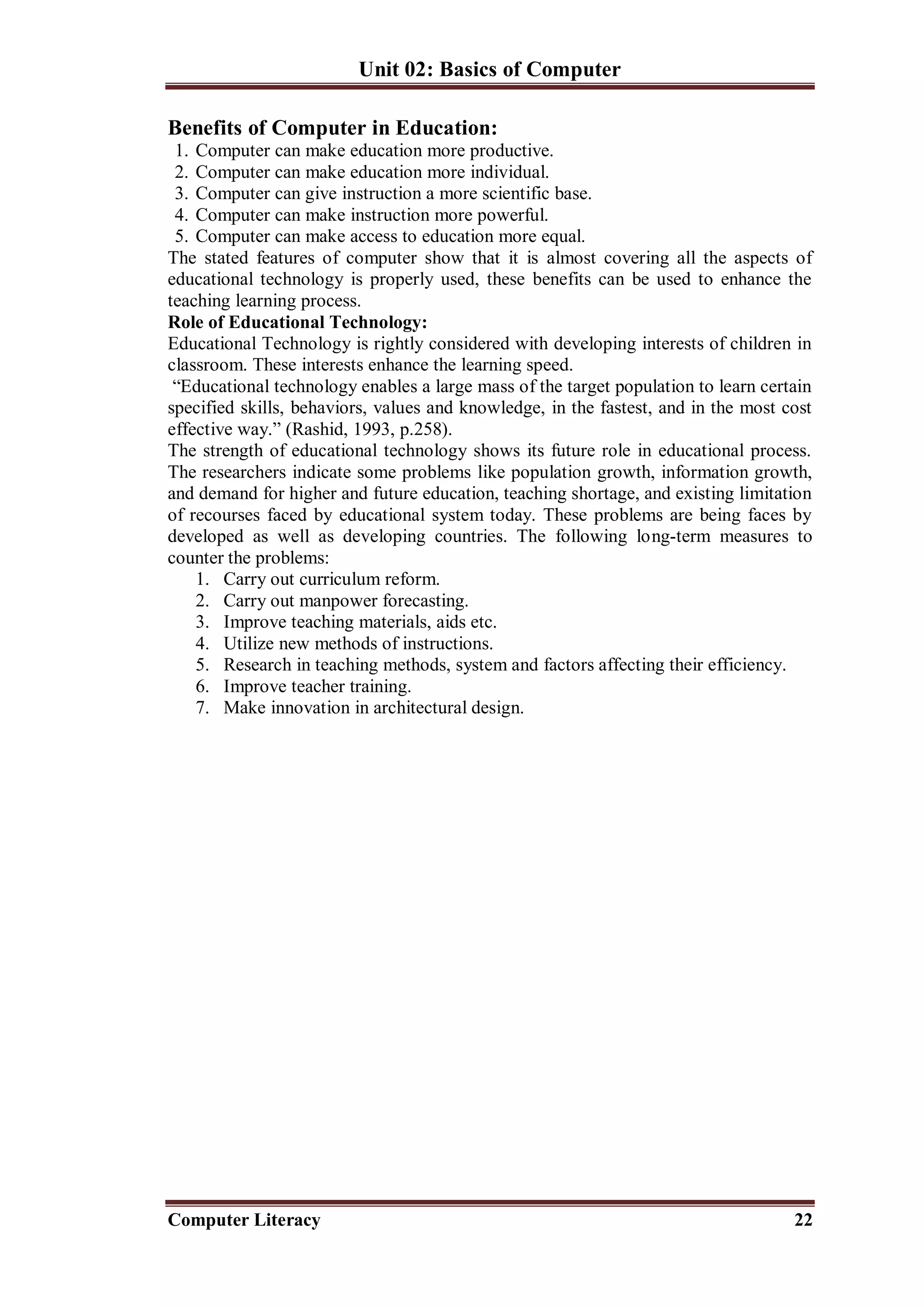This document provides an overview of the basic components and functions of a computer system. It discusses that a computer accepts data as input, processes the data, stores data and instructions in memory, and produces output. The two major categories of computer components are hardware, the physical machine, and software that allows the hardware to function. Input devices like keyboards and mice allow entry of data and instructions, while output devices like monitors and printers display and print the processed results. The central processing unit (CPU), which includes the control unit and arithmetic logic unit, manages all operations in the computer.
